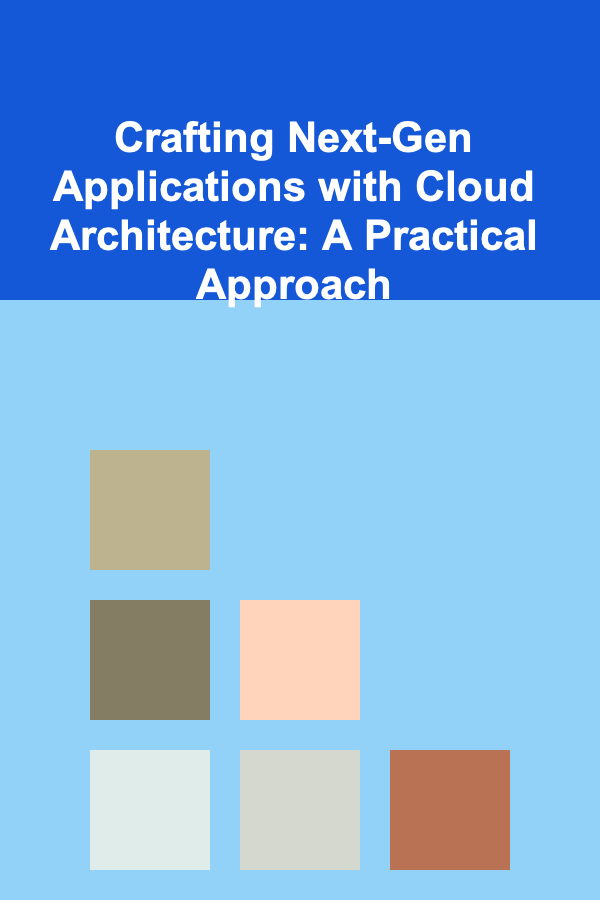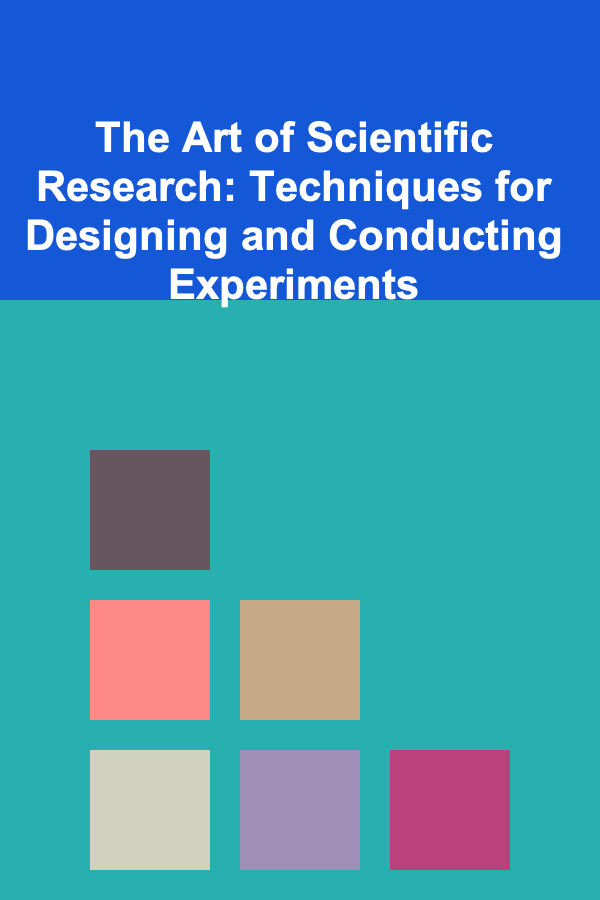
Crafting Next-Gen Applications with Cloud Architecture: A Practical Approach
ebook include PDF & Audio bundle (Micro Guide)
$12.99$11.99
Limited Time Offer! Order within the next:

In today's tech landscape, building next-generation applications requires leveraging modern cloud architectures to meet the demands of scalability, flexibility, and resilience. Cloud-based solutions offer a variety of tools and services that empower developers to build applications that are faster, more efficient, and more reliable than ever before. However, navigating the complexities of cloud architecture can be daunting without a solid understanding of how to design, build, and deploy cloud-native applications effectively.
This guide aims to provide a comprehensive, actionable approach to crafting next-gen applications with cloud architecture. We'll explore the key principles, best practices, and tools necessary to design cloud-based systems that are not only efficient but also scalable and future-proof.
Understanding the Fundamentals of Cloud Architecture
Before diving into the specifics of cloud-native applications, it's important to understand the core concepts that underpin cloud architecture. At its essence, cloud architecture refers to the design of applications and services that are hosted on cloud platforms such as Amazon Web Services (AWS), Google Cloud Platform (GCP), or Microsoft Azure.
Cloud architecture typically involves several layers, including:
- Infrastructure as a Service (IaaS): Provides virtualized computing resources over the internet. Examples include AWS EC2 and Google Compute Engine.
- Platform as a Service (PaaS): A cloud platform that provides tools and services for developers to build, test, and deploy applications. Examples include AWS Elastic Beanstalk and Google App Engine.
- Software as a Service (SaaS): Fully managed software applications hosted in the cloud, such as Salesforce or Google Workspace.
To craft next-gen applications, it's crucial to leverage the benefits offered by these cloud services, such as scalability, high availability, and managed infrastructure.
Key Considerations When Designing Cloud-Native Applications
When designing cloud-native applications, there are several principles that guide the architecture decisions. These principles focus on creating applications that are optimized for cloud environments, ensuring they perform well, scale easily, and remain resilient.
a. Microservices Architecture
A fundamental shift in modern cloud-native applications is moving from monolithic applications to microservices-based designs. Microservices are small, loosely coupled services that perform specific functions and communicate via well-defined APIs. By breaking down applications into smaller, independent units, microservices provide several advantages:
- Scalability: Each microservice can be scaled independently based on demand, allowing resources to be allocated more efficiently.
- Resilience: If one microservice fails, others can continue to function, reducing the risk of total system downtime.
- Faster Development: Teams can work on different services simultaneously without impacting others, speeding up development cycles.
b. Containerization and Orchestration
Containers are lightweight, portable units that encapsulate an application and its dependencies, making it easier to run applications consistently across different environments. Docker is the most popular tool for containerization. Once containers are created, they need to be managed and orchestrated, which is where Kubernetes comes in.
Kubernetes is an open-source container orchestration platform that automates the deployment, scaling, and management of containerized applications. It helps manage the complexity of running microservices in production by automating tasks like:
- Scaling applications based on demand.
- Ensuring availability and fault tolerance.
- Efficient resource management.
By adopting containerization and Kubernetes, you can ensure that your cloud-native application is portable, scalable, and resilient.
c. Serverless Computing
Serverless computing is another key aspect of modern cloud architectures. It allows developers to focus solely on writing application code without worrying about managing infrastructure. With serverless services like AWS Lambda or Google Cloud Functions, developers can deploy individual functions that are triggered by events, such as an HTTP request, file upload, or database change.
The primary benefits of serverless computing include:
- Reduced Infrastructure Management: The cloud provider handles all infrastructure, including provisioning, scaling, and patching.
- Pay-as-you-go Model: You only pay for the compute power you use, which can lead to significant cost savings, especially for applications with variable usage patterns.
- Faster Time to Market: Serverless platforms automate many tasks, allowing developers to focus on the business logic of their applications.
Serverless computing is especially suitable for event-driven applications or workloads that experience unpredictable traffic, making it a valuable tool in building scalable and cost-efficient systems.
d. Data Storage and Management
Next-gen applications generate and rely on vast amounts of data, so the ability to store, manage, and analyze that data is crucial. Cloud providers offer a variety of storage solutions that cater to different use cases:
- Object Storage: Services like AWS S3 or Google Cloud Storage are designed to store large amounts of unstructured data, such as images, videos, and backups.
- Relational Databases: For applications that need structured data with relationships (e.g., user information, transactions), cloud databases like Amazon RDS or Google Cloud SQL are ideal choices.
- NoSQL Databases: For applications that require high scalability and flexibility, NoSQL databases like AWS DynamoDB or Google Firestore are preferred.
By choosing the appropriate storage solution based on your application's needs, you can ensure that your data is highly available, secure, and scalable.
e. Security and Compliance
Security is a top priority in cloud architecture. With data residing in the cloud and applications distributed across various services, it's critical to implement robust security measures. Key security considerations include:
- Identity and Access Management (IAM): Use cloud-native IAM solutions to control who can access your resources and what actions they can perform. Services like AWS IAM and Google Cloud IAM allow you to define roles and permissions for users and applications.
- Data Encryption: Ensure that data at rest and in transit is encrypted to prevent unauthorized access. Most cloud providers offer built-in encryption options, such as AWS KMS or Google Cloud Key Management.
- Compliance: Many cloud platforms offer tools and certifications that help businesses comply with industry regulations such as GDPR, HIPAA, and SOC 2.
By integrating these security and compliance practices into your cloud architecture, you can safeguard your application and user data against security threats.
Best Practices for Building Cloud-Native Applications
Now that we've covered the core principles of cloud architecture, let's explore some best practices for designing and building next-gen applications in the cloud.
a. Design for Failure
In a cloud environment, failure is inevitable. The cloud offers high availability, but no system is immune to outages or issues. A key best practice is to design applications with fault tolerance in mind. Strategies include:
- Redundancy: Use multiple availability zones (AZs) or regions to ensure that your application remains available if one zone or region fails.
- Automatic Scaling: Automatically scale your application to handle sudden traffic spikes or decreases.
- Health Checks and Auto-healing: Set up automated health checks and recovery mechanisms so that failed components are automatically replaced.
b. Automate Everything
Automation is essential for building and maintaining scalable cloud-native applications. Embrace DevOps practices to automate the deployment, testing, and monitoring of your applications. Tools like AWS CloudFormation, Terraform, and Google Cloud Deployment Manager allow you to define and provision infrastructure as code.
Automating key processes ensures that your applications are consistently deployed and updated, reducing the risk of human error and speeding up development cycles.
c. Monitor and Optimize Performance
Once your cloud-native application is up and running, continuous monitoring is essential to maintain performance and identify potential bottlenecks. Use cloud-native monitoring tools like AWS CloudWatch, Google Cloud Monitoring, or Azure Monitor to track application metrics and health.
Performance optimization should also be an ongoing task. Regularly review the architecture for potential improvements in resource utilization, cost efficiency, and latency.
d. Stay Agile and Iterative
Cloud-native applications are built for flexibility, and agility should be baked into your development process. Instead of delivering monolithic, feature-complete products all at once, adopt an iterative approach with regular updates and releases. This allows you to quickly respond to changes in user needs and market demands.
Conclusion
Building next-gen applications with cloud architecture requires a thoughtful approach that combines modern design principles, scalable infrastructure, and efficient development practices. By adopting cloud-native strategies such as microservices, containerization, serverless computing, and automation, you can create applications that are resilient, scalable, and adaptable to changing business needs.
The cloud offers powerful tools and services that can streamline development, improve efficiency, and enhance user experiences. By applying the best practices outlined in this guide, you can craft applications that are not only technologically advanced but also designed to thrive in the cloud environment for years to come.

How to Budget for Interior Renovation Cost Increases
Read More
How to Create a Daily Care Routine for Your Pet
Read More
How to Get Paid for Your Opinions (Surveys)
Read More
How to Incorporate Technology into Your Sewing Room
Read More
How to Stage a Luxury Home to Attract High-End Buyers
Read More
The Art of Scientific Research: Techniques for Designing and Conducting Experiments
Read MoreOther Products

How to Budget for Interior Renovation Cost Increases
Read More
How to Create a Daily Care Routine for Your Pet
Read More
How to Get Paid for Your Opinions (Surveys)
Read More
How to Incorporate Technology into Your Sewing Room
Read More
How to Stage a Luxury Home to Attract High-End Buyers
Read More